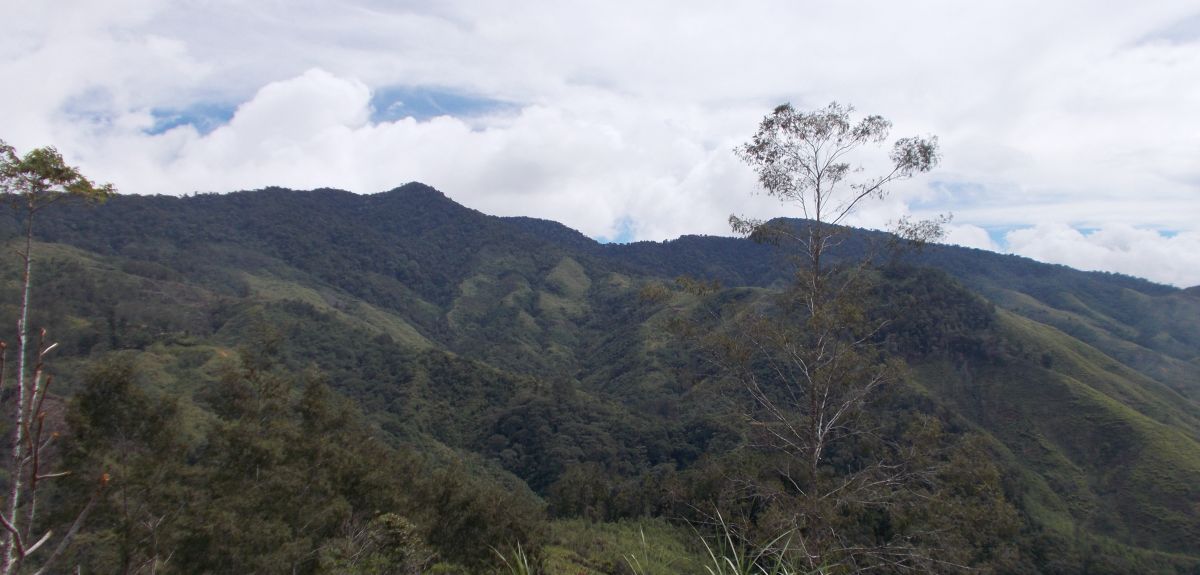
Credit: Glenn Summerhayes/Dylan Gaffney.
New doubts on whether early humans were forced to start farming
The development of agriculture is universally believed to underpin some of the most significant advances made by humans worldwide. In New Guinea, where one of the earliest human experiments with tropical forest agriculture occurred, researchers have cast doubt on two views about the origins of agriculture.
The study questions the idea that climate variability after the last Glacial period drove such innovation out of necessity. It also throws doubt on the view that early hunter gatherers could not survive successfully in tropical forest environments without domestic crops and animals as they found little evidence for climate variability from 12,000 to 300 years ago. Instead, it appears that the montane tropical forests of New Guinea provided a stable source of subsistence for human hunter-gatherers although farmers also worked the land close by. The findings are published in the early online version of the journal, Nature Ecology and Evolution.
Scholars have regarded tropical forests as unattractive habitats for humans due to their poor soils and high humidity. They were also thought incapable of producing regular sources of food, but archaeological work in New Guinea, among other tropical regions, has overturned this idea as researchers found that humans have occupied areas of this region (today covered in rainforest) for around 45,000 years.
These findings suggest that agriculture is one way in which humans changed the landscape. But in this area, it was not an inevitable development
Dr Patrick Roberts from the School of Archaeology
The team analysed the teeth of small mammals like fruit bats, cuscus, ring-tailed possum and macropods from the archaeological site of Kiowa. The remains are dated from 12,000 to 8,000 years ago, when agriculture in the region first started, up to around 300 years ago. The animals are locally well-studied and are already documented as being hunted by local foragers into recorded history. Due to their short life cycles and specialised adaptations, these animals are highly sensitive to environmental change, which makes them good proxies for the ‘local’ picture of vegetation, says the paper.
The results provide a new, rare environmental record for the Central Highlands of New Guinea. The dietary signatures obtained from the mammals’ teeth show that for thousands of years the local climate was stable, and was occupied by humans throughout the period. There were no obvious signs of sudden climate change that might have propelled humans into becoming more organised in how they obtained their food, suggests the paper.
'While there was intensive farming, including the domestication of crops such as the banana, yam, and taro, we can assume from this record of small mammals that because the animals survived throughout the period, human foragers could also hunt successfully in tropical forest environments. We believe they were not forced to become farmers in order to survive,' says lead author, Patrick Roberts, of the University of Oxford and the Max Planck Institute for the Science of Human History.
'We have assumed in the past that agriculture is a desirable invention, replacing previous ways of obtaining food in prehistoric New Guinea. These findings suggest that agriculture is one way in which humans changed the landscape, but in this area it was certainly not an inevitable development,' adds Dr Roberts.
The paper, ‘Persistent tropical foraging in the highlands of terminal Pleistocene/Holocene New Guinea’, is in the journal, Nature Ecology and Evolution.
 New Year Honours 2026
New Year Honours 2026
 New study estimates NHS England spends 3% of its primary and secondary care budget on the health impacts of temperature
New study estimates NHS England spends 3% of its primary and secondary care budget on the health impacts of temperature
 International collaboration launches largest-ever therapeutics trial for patients hospitalised with dengue
International collaboration launches largest-ever therapeutics trial for patients hospitalised with dengue
 Oxford-built multi-agent assistant for cancer care to be piloted in collaboration with Microsoft
Oxford-built multi-agent assistant for cancer care to be piloted in collaboration with Microsoft